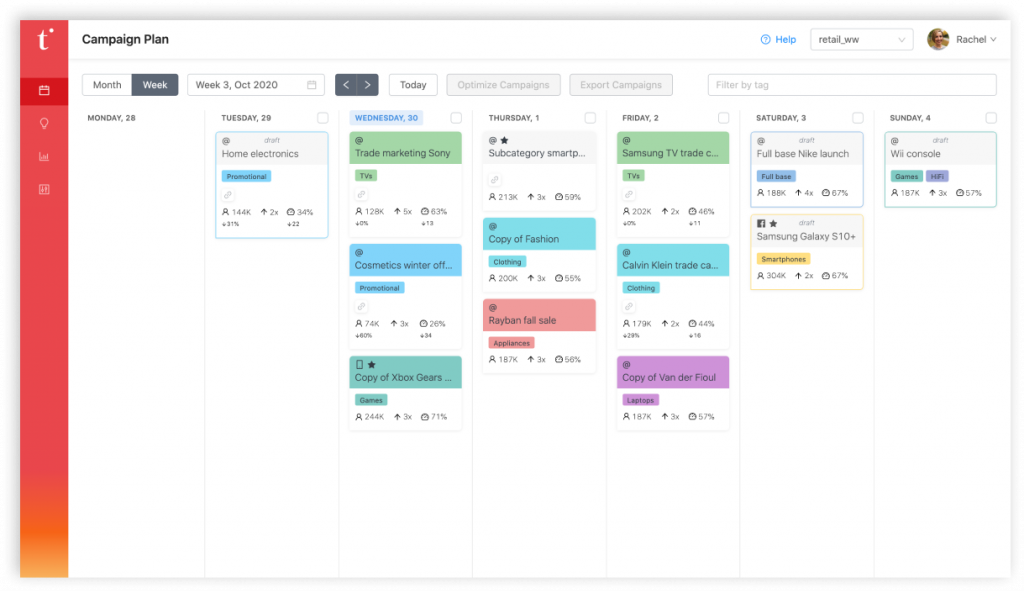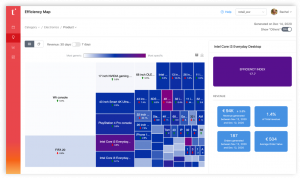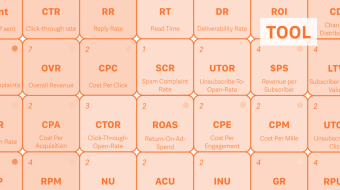Target audience building is core to modern marketing. It helps online retailers find the best customers for their products.
But oftentimes, I don’t think it is done the right way.
Let’s take an example.
Let’s say you’re a retailer and you’re about to launch a Facebook Custom Audience campaign to promote Sir Elton John’s biography. You will likely end up targeting all your customers that already bought books about music.
Now you’re an airline and your yield management team urges you to produce a newsletter about Thailand. You could promote flights to Bangkok to all the customers that already bought flights to Asia AND that visited the Thailand webpage on our website in the last 30 days.
With this type of segmentation, you’re only leveraging what you already know about your customers.
And there’ll be plenty of untapped opportunities you’ll be missing out on.
The limitations of traditional manually built segmentation
Here’s my humble attempt to bring a sense of clarity around what are the main limitations of manual target audience building.
Here they are, in no particular order.
- Criteria selection: It is not because you have been to Myanmar last year that you may be interested in booking a flight in Thailand today. Those criteria are decided using marketer intuition, not data. Those decisions are made even harder when there is a business urge to send the campaign as soon as possible.
- Reach: An easily overlooked issue about fine-tuned segmentation is that it is often correlated to ridiculously small volumes. What should marketers do next? They try to broaden their segments, diluting their power thereby, becoming less and less customer-centric. Damaging customer experience always results in losing clients, and revenue.
- Productivity: Building an SQL query to import an audience in Facebook Custom Audience, a workflow in Adobe Campaign or an audience in SalesForce Marketing Cloud is time consuming and requires multiple validation rounds to reach the desired volumes.
The process of target audience building hasn’t evolved in 40 years, data is becoming more and more prevalent but humans are still required to do the heavy lifting.
A combination of machine learning and a marketer-centric user experience could transform how customer marketing is done.
Tinyclues was created on a hunch, to answer exactly these issues, and give the power of data back to marketers.
What does it take to benefit from the best-of-breed targeting engine?
So how can marketers use Tinyclues and build their own custom target audience?
To start things off, it’s important to know that all your customer databases will have been seamlessly integrated and matched to our algorithms by our internal data operations team in about 10 days, so you don’t have to worry about the technicalities and marketers can start working right off.
Once this is done, Tinyclues is ready to go!
The marketer has to start by inputting the offer he or she wishes to promote in the next marketing campaign, directly in the Tinyclues interface in his browser.
Then, the algorithm will identify the recent buyers of those offers–product, brand, destination–and build a mathematical resume of those recent buyers based on all the customer data available. It can be anonymized socio-demographic information, purchase history, marketing behavior… you name it.
This mathematical resume will be the seed to rank the entire customer database from top to bottom on how much they resemble those recent buyers.
In a matter of minutes, Tinyclues is able to rank the entire customer database based on their probability to purchase the content that the marketer wishes to promote.
The power of underlying signals with Tinyclues target audiences
Building this scoring on recent buyers, and leveraging the entire customer data related to those buyers, allows Tinyclues to understand seasonality and how a specific offer is unique today.
For instance, a Tinyclues’ client decided to target the same product, the new Fifa 2020 video game, on several occasions:
- when the product was launched, the best 10% of the customer database was mostly composed of hardcore gamers
- around Christmas time, the best 10% of the customer database was mostly people buying the videogame to offer it
- A year after its launch, the best 10% of the customer database was gamers interested in second-hand products
Without Tinyclues, this retailer would have used the same old gaming segment of past video games buyers, regardless of the category.
And would have never thought to target some–or not at all–women of 45+ around Christmas time 🤶
Proven results through Tinyclues target audiences
We’ve been testing the results of Tinyclues over the years with all our clients and I can tell you it’s working.
Retailers and travel companies observe a 30% increase in revenue from campaigns sent with the audiences built with Tinyclues, against other traditional audience-building methods.
That’s what I call best-of-breed.
All the ranking algorithms of course happen under the hood. From the user’s perspective, creating a target audience for a given campaign is as easy as:
- Selecting the campaign topic (product, brand, category promoted) from a drop-down menu
- Selecting the volume without constraint of reach or volume
- Clicking export
And voilà! Your ad-hoc audience will have been exported to Salesforce Marketing Cloud, Facebook Custom Audience, Airship, Oracle Responsys or Cheetah Digital in an instant.
Building a product that allows marketers to orchestrate thousands of campaigns per year
Beating Tinyclues’ audience building capabilities with an army of data scientists is possible, for one campaign. Doing it over dozens of campaigns has never been achieved.
Outbound campaigns are, by essence, dynamic and conflicting. Tinyclues’ Product team designed a user experience that allows marketers to:
1. Create a new audience in just a few clicks to respond to any last-minute internal demand.
2. Orchestrate a group of campaigns, that may have overlapped audiences, to optimize the volume sent, without any issue of reach, daily and weekly pressure, and to track the overall revenues generated.
3. Identify topics that could be proactively added to the campaign marketing plan. A feature Tinyclues’ clients love is the Efficiency Map: a two-dimensional insight tool that helps analyze both the repartition of the revenue generated between different brands or categories of the client portfolio, and the capability of Tinyclues to concentrate this revenue in a fraction of the customer database. Tinyclues’ clients, like Beauty Success, use the Efficiency Maps to identify Brands that should be promoted because they represent a significant revenue that can be captured by only addressing 5% of their customer database.
Thanks to CDPs, customer data will be more easily accessible to marketers in the future. And that’s a good thing.
Unfortunately, the audience building capabilities of CDPs are the same as that of the Marketing Clouds. They are designed to manually build one audience at a time, and rapidly hit a glass-ceiling creating frustration for both CRM and commercial teams.
Tinyclues integrates with all Marketing Clouds and CDPs to be the intelligent layer allowing marketers to scale their outbound campaigns, increasing overall revenue and customer engagement.
and learn more about Tinyclues
By filling in this form, you agree to our privacy policy





